Rear Window
8.6 /10 1 Votes8.6
Duration Language English | 8.6/10 IMDb Genre Mystery, Thriller Country United States | |||||||||||||||||||||||||||||||||
 | ||||||||||||||||||||||||||||||||||
Release date September 1, 1954 (1954-09-01) (US) Cast (L. B. Jefferies), (Lisa Carol Fremont), (Det. Lt. Thomas J. Doyle), (Stella), (Lars Thorwald), (Miss Lonelyheart) Similar movies Blackhat , The Expendables 3 , Salt , Mission: Impossible III , Silver Linings Playbook , Straight Outta Compton Tagline It only takes one witness to spoil the perfect crime. | ||||||||||||||||||||||||||||||||||
Rear window official trailer 1 1954 hd
Rear Window is a 1954 American Technicolor mystery thriller film directed by Alfred Hitchcock and written by John Michael Hayes based on Cornell Woolrich's 1942 short story "It Had to Be Murder". Originally released by Paramount Pictures, the film stars James Stewart, Grace Kelly, Wendell Corey, Thelma Ritter and Raymond Burr. It was screened at the 1954 Venice Film Festival.
Contents
- Rear window official trailer 1 1954 hd
- Rear window official trailer 1 james stewart grace kelly movie 1954 hd
- Plot
- Cast
- Production
- Reception
- Analysis
- Legacy
- Ownership
- Influence
- Film
- Literature
- Television
- Home media
- References
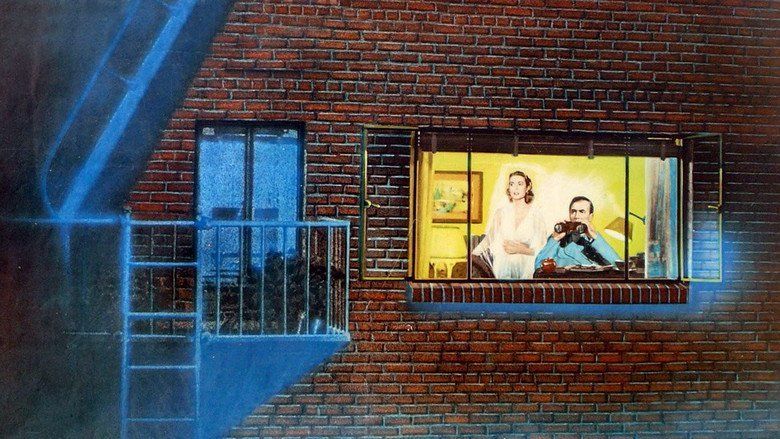
The film is considered by many filmgoers, critics and scholars to be one of Hitchcock's best and one of the greatest movies ever made. The film received four Academy Award nominations and was ranked No. 42 on AFI's 100 Years...100 Movies list and No. 48 on the 10th-anniversary edition. In 1997, Rear Window was added to the United States National Film Registry in the Library of Congress as being "culturally, historically, or aesthetically significant".
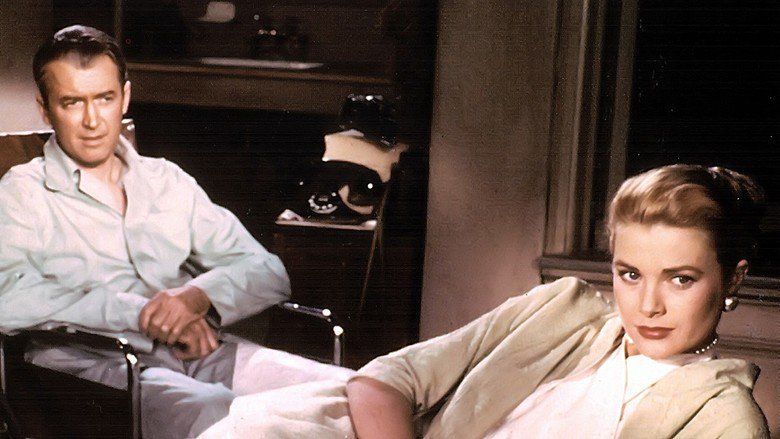
Rear window official trailer 1 james stewart grace kelly movie 1954 hd
Plot
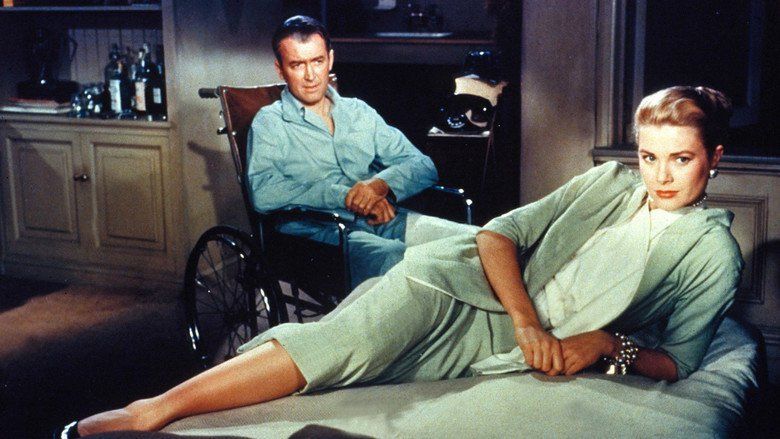
After breaking his leg photographing a racetrack accident, a professional photographer, the adventurous L. B. "Jeff" Jefferies (James Stewart), is confined to a wheelchair in his Greenwich Village apartment to recuperate. His rear window looks out onto a courtyard and several other apartments. During a powerful heat wave, he watches his neighbors, who keep their windows open to stay cool.

He observes a flamboyant dancer he nicknames "Miss Torso"; a single middle-aged woman he calls "Miss Lonelyhearts"; a talented, single, middle-aged composer-pianist; several married couples; a female sculptor; and Lars Thorwald (Raymond Burr), a traveling jewelry salesman with a bedridden wife.
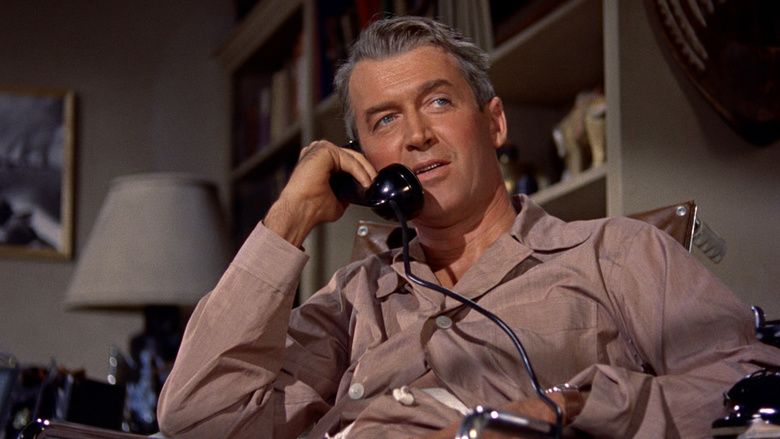
Jeff's sophisticated, beautiful socialite girlfriend, Lisa Fremont (Grace Kelly), visits him regularly, as does his insurance company's nurse, Stella (Thelma Ritter). Stella wants Jeff to settle down and marry Lisa, but Jeff is reluctant.
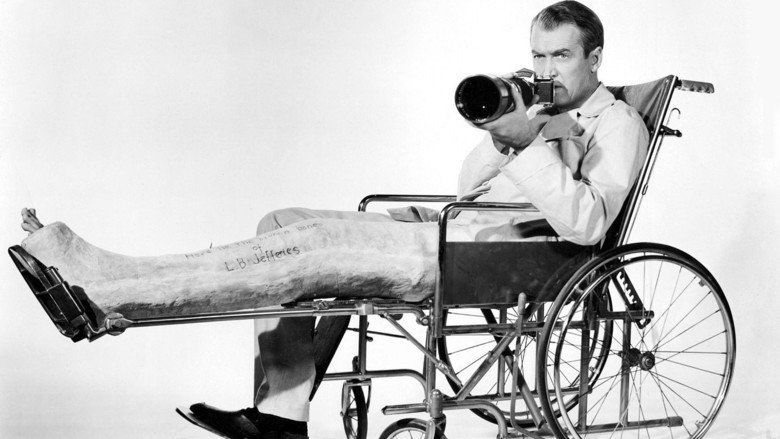
One night during a thunderstorm Jeff hears a woman scream "Don't!" and then the sound of breaking glass. Later he is awakened by thunder and observes Thorwald leaving his apartment. Thorwald makes repeated late-night trips carrying his sample case. The next morning Jeff notices that Thorwald's wife is gone, and then sees Thorwald cleaning a large knife and handsaw. Later, Thorwald ties a large trunk with heavy rope and has moving men haul it away. Jeff discusses all this with Lisa and with Stella.

Jeff becomes convinced that Thorwald has murdered his wife. Jeff explains this to his friend Tom Doyle (Wendell Corey), a New York City Police detective, and asks him to do some research. Doyle finds nothing suspicious; apparently Mrs. Thorwald is upstate, and picked up the trunk herself.
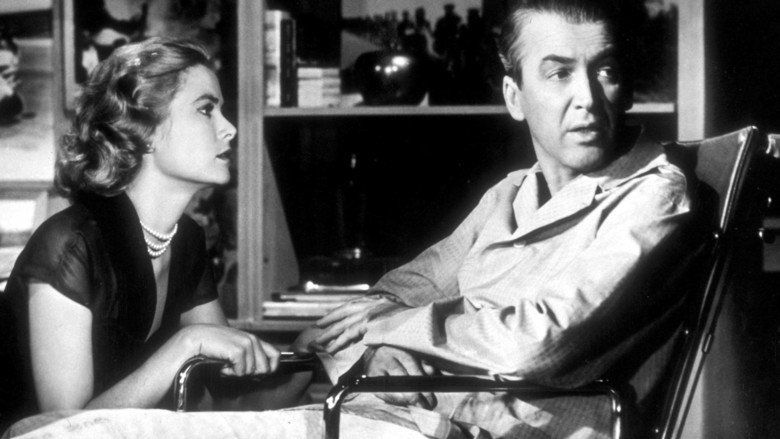
Soon after, a neighbor's dog is found dead, its neck broken. The owner yells out into the courtyard, "You don't know the meaning of the word 'neighbors'! Neighbors like each other, speak to each other, care if anybody lives or dies! But none of you do!" All the neighbors run to their windows to see what is happening, except for Thorwald, whose cigar can be seen glowing as he sits quietly in his dark apartment.
Certain that Thorwald is also guilty of killing the dog, Jeff asks Lisa to slip an accusatory note under his door, so Jeff can watch his reaction when he reads it. Then, as a pretext to get Thorwald out of his apartment, Jeff telephones him and arranges a meeting at a bar. He believes Thorwald buried something incriminating in the courtyard flower bed and killed the dog to stop it digging there, so when Thorwald leaves, Lisa and Stella dig up the flowers; they find nothing.
Much to Jeff's amazement and admiration, Lisa then climbs the fire escape to Thorwald's apartment and clambers in through an open window. When Thorwald returns and grabs Lisa, Jeff calls the police, who arrive in time to save her by arresting her. Jeff sees Lisa has her hands behind her back, wiggling her finger with Mrs. Thorwald's wedding ring on it. Thorwald notices this, and realizing that she is signaling to someone, he sees Jeff across the courtyard.
Jeff phones Doyle and leaves an urgent message. Stella heads for the police station to post bail for Lisa. When his phone rings, Jeff assumes it is Doyle, and says that the suspect has left the apartment. When no one answers, Jeff realizes that Thorwald himself had called, and is heading over to confront him. When Thorwald enters, Jeff repeatedly sets off his camera flashbulbs, temporarily blinding him. However, Thorwald grabs Jeff and manages to push him out of the open window, as Jeff is yelling for help. Police officers enter the apartment as he falls to the ground; other officers have run over to break his fall. Thorwald confesses to the police soon afterward.
A few days later, the heat has lifted, and Jeff rests peacefully in his wheelchair, now with casts on both legs. The lonely neighbor is chatting with the pianist in his apartment, the dancer's lover returns home from the army, the couple whose dog was killed have a new dog, and the newly married couple are bickering.
Lisa reclines on the daybed in Jeff's apartment, wearing jeans and apparently reading a book titled Beyond the High Himalayas. As soon as Jeff falls asleep, Lisa puts the book down and happily opens a fashion magazine.
Cast
Uncredited
Cast notes
Production
The film was shot entirely at Paramount studios, which included an enormous indoor set to replicate a Greenwich Village courtyard. Set designers Hal Pereira and Joseph MacMillan Johnson spent six weeks building the extremely detailed and complex set, which ended up being the largest of its kind at Paramount. One of the unique features of the set was its massive drainage system, constructed in order to accommodate the rain sequence in the film. They also built the set around a highly-nuanced lighting system which was able to create natural-looking lighting effects for both the day and night scenes. Even though the address given in the film is 125 W. Ninth Street in New York's Greenwich Village, the set was actually based on a real courtyard located at 125 Christopher Street.
In addition to the meticulous care and detail put into the set, there was also careful attention given to sound, including the use of natural sounds and music that would drift across the courtyard and into Jefferies' apartment. At one point, the voice of Bing Crosby can be heard singing "To See You Is to Love You", originally from the 1952 Paramount film Road to Bali. Also heard on the soundtrack are versions of songs popularized earlier in the decade by Nat King Cole ("Mona Lisa", 1950) and Dean Martin ("That's Amore", 1952), along with segments from Leonard Bernstein's score for Jerome Robbins' ballet Fancy Free (1944), Richard Rodgers' song "Lover" (1932), and "M'appari tutt'amor" from Friedrich von Flotow's opera Martha (1844), most borrowed from Paramount's music publisher, Famous Music.
Hitchcock used costume designer Edith Head on all of his Paramount films.
Although veteran Hollywood composer Franz Waxman is credited with the score for the film, his contributions were limited to the opening and closing titles and the piano tune ("Lisa") written by one of the neighbors, a composer (Ross Bagdasarian), during the film. This was Waxman's final score for Hitchcock. The director used primarily "diegetic" sounds—sounds arising from the normal life of the characters—throughout the film.
Reception
A "benefit world premiere" for the film, with United Nations officials and "prominent members of the social and entertainment worlds" in attendance, was held on August 4, 1954 at the Rivoli Theatre in New York City, with proceeds going to the American-Korean Foundation (an aid organization founded soon after the end of the Korean War and headed by President Eisenhower's brother).
The movie was released wide on September 1, 1954.
The movie went on to earn an estimated $5.3 million at the North American box office in 1954.
The film received overwhelmingly positive reviews from critics and is considered one of Hitchcock's finest films. On the website Rotten Tomatoes, the film has been universally praised, garnering a 100% certified fresh rating, based on 61 reviews, with the consensus stating that "Hitchcock exerted full potential of suspense in this masterpiece."
Critic Bosley Crowther of The New York Times attended the benefit premiere, and in his review called the film a "tense and exciting exercise" and Hitchcock a director whose work has a "maximum of build-up to the punch, a maximum of carefully tricked deception and incidents to divert and amuse." Crowther also notes: "Mr. Hitchcock's film is not 'significant.' What it has to say about people and human nature is superficial and glib. But it does expose many facets of the loneliness of city life and it tacitly demonstrates the impulse of morbid curiosity. The purpose of it is sensation, and that it generally provides in the colorfulness of its detail and in the flood of menace toward the end."
Time called it "just possibly the second most entertaining picture (after The 39 Steps) ever made by Alfred Hitchcock" and a film in which there is "never an instant ... when Director Hitchcock is not in minute and masterly control of his material." The same review did note "occasional studied lapses of taste and, more important, the eerie sense a Hitchcock audience has of reacting in a manner so carefully foreseen as to seem practically foreordained." Variety called the film "one of Alfred Hitchcock's better thrillers" which "combines technical and artistic skills in a manner that makes this an unusually good piece of murder mystery entertainment."
Nearly 30 years after the film's initial release, Roger Ebert reviewed the Universal re-release in October 1983, after Hitchcock's estate was settled. He said the film "develops such a clean, uncluttered line from beginning to end that we're drawn through it (and into it) effortlessly. The experience is not so much like watching a movie, as like ... well, like spying on your neighbors. Hitchcock traps us right from the first ... And because Hitchcock makes us accomplices in Stewart's voyeurism, we're along for the ride. When an enraged man comes bursting through the door to kill Stewart, we can't detach ourselves, because we looked too, and so we share the guilt and in a way we deserve what's coming to him."
Analysis
In his book, Alfred Hitchcock's "Rear Window", John Belton addresses the underlying issues of voyeurism, patriarchy and feminism that are evident in the film. He asserts "Rear Window's story is "about" spectacle; it explores the fascination with looking and the attraction of that which is being looked at."
Voyeurism
John Fawell notes in Dennis Perry’s book, Hitchcock and Poe: The Legacy of Delight and Terror, that Hitchcock “recognized that the darkest aspect of voyeurism…is our desire for awful things to happen to people…to make ourselves feel better, and to relieve ourselves of the burden of examining our own lives.” The Master of Terror challenges the audience, forcing them to peer through his rear window and become exposed to, as Donald Spotto calls it in his 1976 book The Art of Alfred Hitchcock: Fifty Years of His Motion Pictures, the “social contagion” of acting as voyeur.
In an explicit example of a condemnation of voyeurism, Stella expresses her outrage at Jeffries’ voyeuristic habits saying, “In the old days, they’d put your eyes out with a red hot poker” and “What people ought to do is get outside and look in for a change.”
One climactic scene in the film portrays both the positive and negative effects of voyeurism. Driven by curiosity and incessant watching, with Jeffries watching from his window, Lisa sneaks into Thorwald’s second floor apartment, looking for clues, and is apprehended by him. Jeffries is in obvious anxiety and overcome with panic as he sees Thorwald walk into the apartment and notice the irregular placement of the purse on the bed. Jeffries anxiously jitters in his wheelchair, and grabs his telephoto camera to watch the situation unfold, eventually calling the police because Miss Lonelyhearts is contemplating suicide in the neighboring apartment. Chillingly, Jeffries watches Lisa in Thorwald’s apartment rather than keeping an eye on the woman about to commit suicide. Thorwald turns off the lights, shutting off Jeffries sole means of communication and protection with Lisa; Jeffries still pays attention to the pitch black apartment instead of Miss Lonelyhearts. The tension Jeffries feels is unbearable and acutely distressing as he realizes that he is responsible for Lisa now that he can’t see her. The police go to the Thorwald apartment, the lights flicker on, and any danger coming toward Lisa is temporarily dismissed. Although Lisa is taken to jail, Jeffries is utterly mesmerized by her dauntless actions.
With further analysis, it is understandable that Jeffries’ positive evolution would be impossible without voyeurism—or as Robin Wood puts it in his 1989 book Hitchcock’s Films Revisited, “the indulging of morbid curiosity and the consequences of that indulgence.”
Legacy
In 1997, Rear Window was selected for preservation in the United States National Film Registry by the Library of Congress as being "culturally, historically, or aesthetically significant". By this time, the film interested other directors with its theme of voyeurism, and other reworkings of the film soon followed, which included Brian De Palma's 1984 film Body Double and Phillip Noyce's 1993 film Sliver.
Rear Window was restored by the team of Robert A. Harris and James C. Katz for its 1999 limited theatrical re-release (utilizing Technicolor dye-transfer prints for the first time in this title's history) and the Collector's Edition DVD release in 2000.
American Film Institute included the film as #42 in AFI's 100 Years... 100 Movies, #14 in AFI's 100 Years... 100 Thrills, #48 in AFI's 100 Years... 100 Movies (10th Anniversary Edition) and #3 in AFI's 10 Top 10 (Mysteries).
Ownership
Ownership of the copyright in Woolrich's original story was eventually litigated before the United States Supreme Court in Stewart v. Abend, 495 U.S. 207 (1990). The film was copyrighted in 1954 by Patron Inc., a production company set up by Hitchcock and Stewart. As a result, Stewart and Hitchcock's estate became involved in the Supreme Court case, and Sheldon Abend became a producer of the 1998 remake of Rear Window.
Rear Window is one of several of Hitchcock's films originally released by Paramount Pictures, for which Hitchcock retained the copyright, and which was later acquired by Universal Studios in 1983 from Hitchcock's estate.
Influence
Rear Window has been repeatedly re-told, parodied, or referenced.
Film
Literature
Television
Home media
On September 4, 2012, Universal Studios Home Entertainment re-released Rear Window to DVD, as a Region 1 widescreen DVD. This release includes the items available in the 2001 release.
On May 6, 2014, Universal Studios Home Entertainment released Rear Window to Blu-ray format, with slightly expanded extras.
References
Rear Window WikipediaRear Window IMDb Rear Window themoviedb.org
